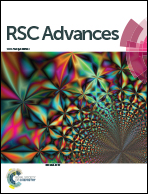The influence mechanism of nanoparticles on the dielectric properties of epoxy resin
Abstract
In order to study the influence mechanism of nanoparticles on the dielectric properties of epoxy resin materials for composite insulators under different nanoparticle filling amounts, the free volume, dielectric relaxation, breakdown strength and trap distribution of the samples were tested by positron annihilation lifetime spectroscopy, breakdown strength, broadband dielectric spectroscopy (BDS) and thermally stimulated current (TSC). The results show that the limiting effect of nanoparticles rapidly reduced the number of traps in the amorphous zone of materials at a low filling amount. As a result, the free path of carriers was increased and the concentration of free volume was decreased, which can limit the injection and transportation of carriers, resulting in the increase of material breakdown strength. At a high filling amount, a large number of interfacial deep traps were introduced into the nanoparticles, and the carrier free volume concentration and size were reduced. The traps inside the material were mainly interfacial deep traps. Under the action of an external electric field, a hetero polar charge was formed on the other end to cause electric field distortion, thus the breakdown field strength of the material was weakened.



 Please wait while we load your content...
Please wait while we load your content...